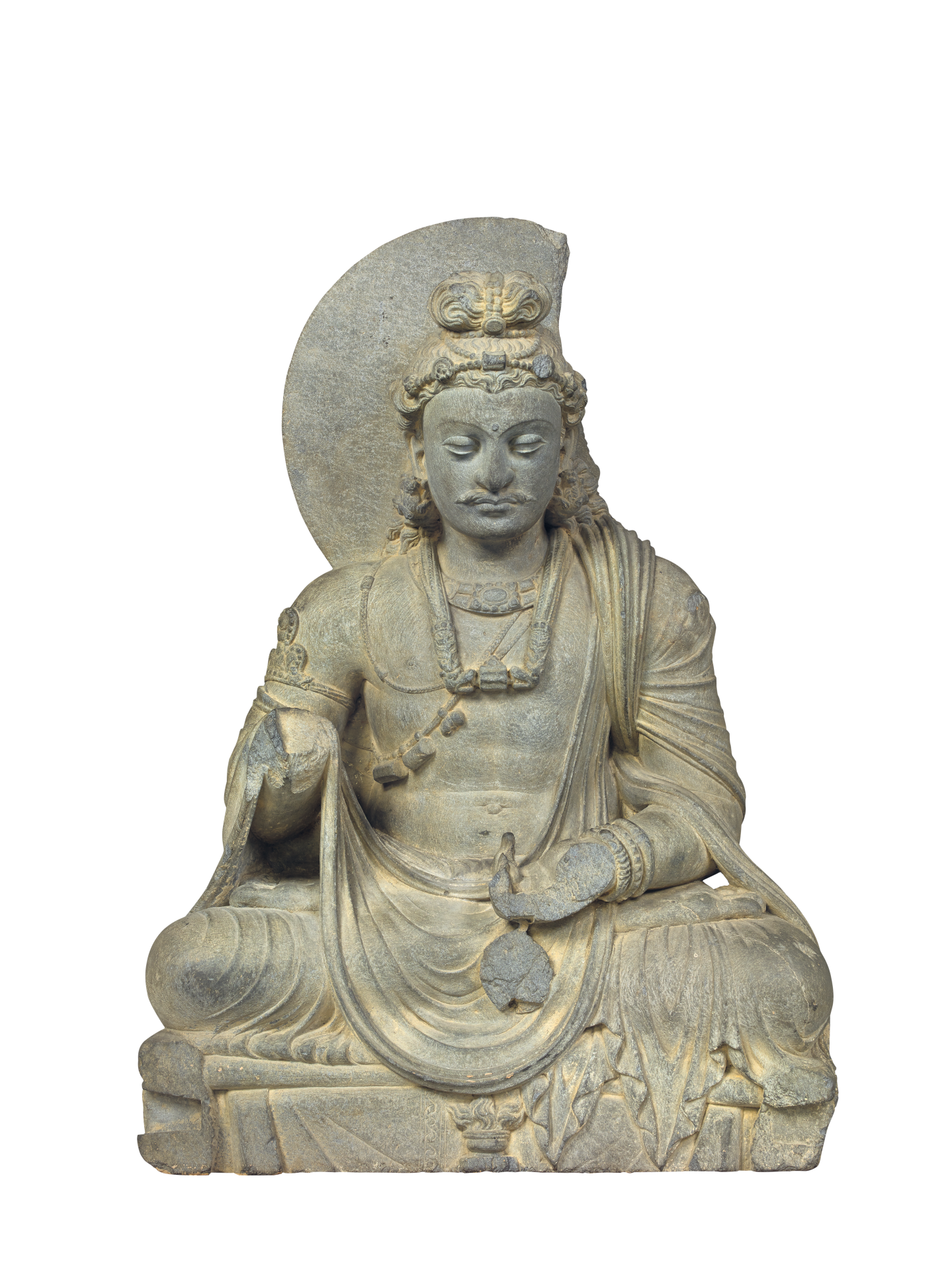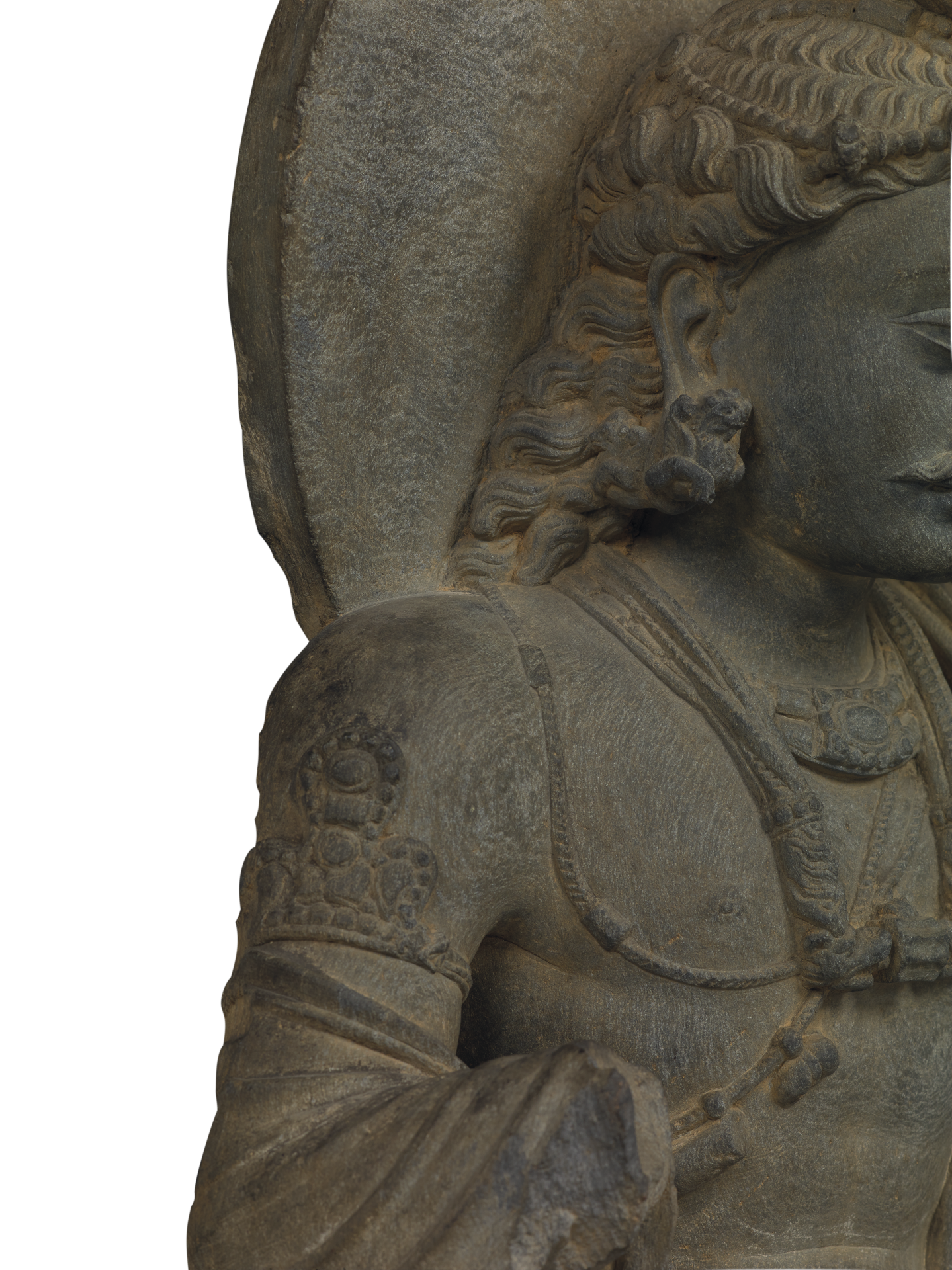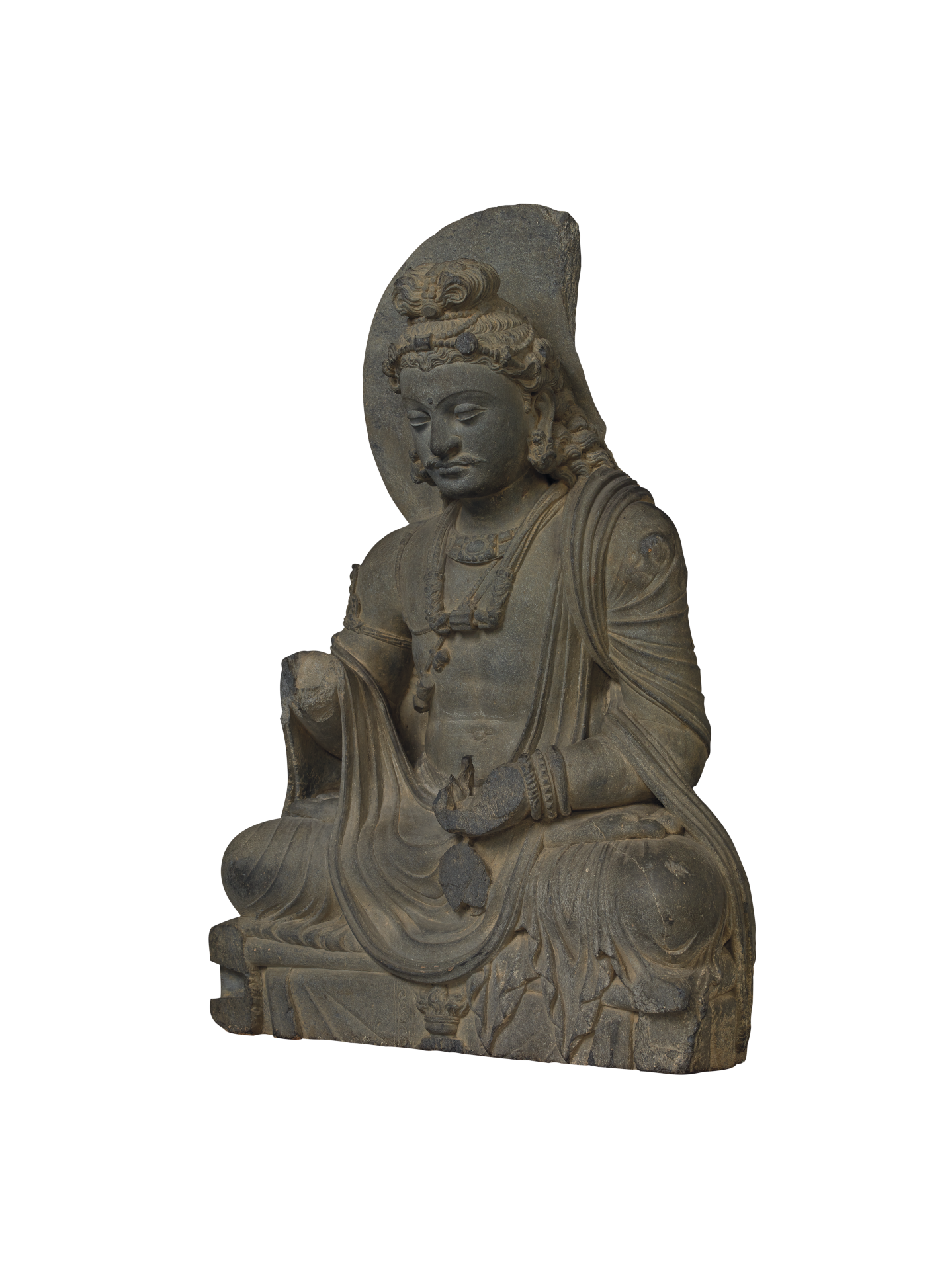Seated Maitreya Bodhisattva
Maitreya Bodhisattva, The Benevolent One, is the successor of Śākyamuni Buddha and hence the Future Buddha. Before attaining Buddhahood, Bodhisattva Maitreya preaches and practises in his celestial abode in Tuṣita Heaven, while waiting for the right time to be reborn into the sentient world. He will attain Enlightenment and Buddhahood, hold the Three Great Assemblies under the Dragon Tree, deliver sentient beings from sufferings and help them realise Arhatship.
This seated Bodhisattva Maitreya statue is superbly sculpted. The countenance, physique and ornamental accessories are realistically and exquisitely portrayed. It is a gem among Gandhāran statuary. This statue shows Maitreya wearing a splendid crown and has his big wavy hair rolled into a topknot. The ear ornaments in the shape of a pair of reclining lions are extremely exquisite. Maitreya has an oval face, a broad round forehead, an ūrṇā between his eyebrows, pronounced facial features, half-closed eyes, a high nose with a long bridge, full lips under the moustache, and an expression showing determination and calmness. His upper body is exposed apart from the long shawl, strings of jewels, armlets and bangles. The right hand is broken off, though the forearm is raised. The left hand in front of the abdomen is partly damaged, but the remnant suggests that a purifying bottle was once held in the hand. Maitreya is seated with legs locked in ‘lotus posture’ (padmāsana) on a square pedestal.
He has a strong and robust physique, thick broad shoulders, stout upper arms, a thick solid chest, a firm abdomen with bulging muscles revealing realistic anatomy. The folds and layering of the diaphanous shawl that wraps around his body is wonderfully depicted. The shape of the armlet underneath the shawl below the left shoulder is delicately revealed. The flaming censer carved in relief at the centre front of the pedestal is a common image associated with Maitreya in Gandhāran art.


